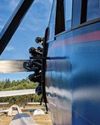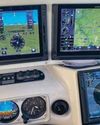
I know at least a dozen pilots who rediscovered the value of GA during the pandemic by taking trips that would have been impossible or uncomfortable on the airlines. Unfortunately, I also know a few who wanted to make such trips but didn’t because they were unsure how to get started. They understood how to fly an airplane; they just hadn’t learned how to travel in one.
You won’t find this topic on most flight school curriculums, but with a little preparation, it’s easy to leave the pattern behind. That’s true whether you’re flying a taildragger at 500 feet or a TBM at FL 300—the mindset is more important than the airplane.
Planning and Gear
For real-world traveling, you’ll need to go beyond the knowledge-test trivia and focus on more practical topics. Start with fuel. You need to know how much you’ll burn on your trip, but you should evaluate multiple scenarios. Will weather, airspace, altitude or terrain affect your route? Also, consider how much reserve you really need—the minimums specified in the regulations are just that, a bare minimum. The goal is to have enough fuel to stay flexible as conditions change.
Instrument pilots have to consider an alternate airport, but it’s a good idea for VFR pilots too. Airports can be closed because of weather, disabled airplanes and pop-up TFRs, so it’s best to have backups in mind. You might go so far as to have “bailout” options at multiple points and carry enough fuel to make these reachable.
This story is from the August 2021 edition of Flying.
Start your 7-day Magzter GOLD free trial to access thousands of curated premium stories, and 9,000+ magazines and newspapers.
Already a subscriber ? Sign In
This story is from the August 2021 edition of Flying.
Start your 7-day Magzter GOLD free trial to access thousands of curated premium stories, and 9,000+ magazines and newspapers.
Already a subscriber? Sign In

The Temple of Speed
Reno entices even this altitude-oriented pilot.

Flat Sixes
Fanatical artisans

Blue over Green, Tent in Between
I’m old , I’m cranky. Why do I keep air-camping?

Gulfstream Reveals G400, G800
The product lineup gains large-cabin and ultralong-range mounts.

Every Airplane Requires a Checkout
Embrace the challenge of mastering a new machine.

Fuhggedaboutit
Fifty-plus years of f lying forgetfulness

THE MAULE FAMILY APPROACHABLE AIRCRAFT
Choose your mount —the Maules do it all.

Sisters
“ Women certainly have the courage and tenacity required for long flights.” —Mildred Doran

INSIDE OUT OR OUTSIDE IN?
What kind of pilot should you be?

WE FLY: CESSNA CITATION CJ4 GEN2
THE FLAGSHIP CJ JUST GOT A WHOLE LOT BETTER.